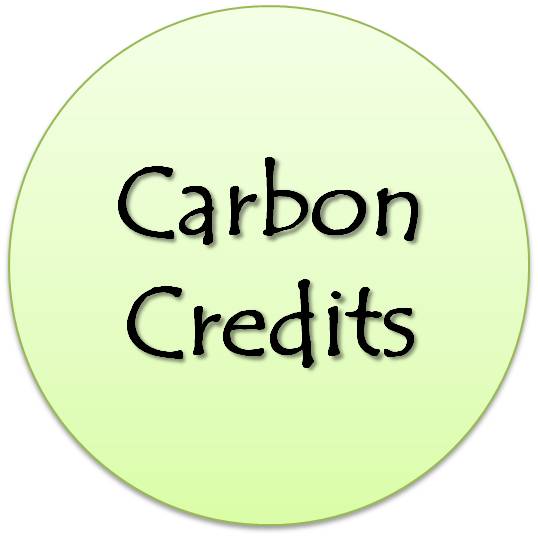Methane emission from waste water treatment plants can earn carbon revenue
Methane (CH4) is emitted from both anthropogenic and natural sources. Fossil fuel production, rice cultivation, biomass burning, and waste management are some of the activities that release methane. In the case of organic waste, it is produced from microbial decomposition of organic matter in the absence of oxygen (Anaerobic decomposition).
Wastewater from domestic (municipal sewage) and industrial sources are treated in municipal sewage treatment facilities and private effluent treatment plants (ETPs). If the wastewater contains loads of organic constituents (with high Chemical Oxygen Demand- COD) then it is treated anaerobically. These treatment processes produce methane which is one of the potent Green House Gas. Methane emissions can be avoided, however, by treating the wastewater and the associated sludge under aerobic conditions or by capturing methane released under anaerobic conditions. Projects with technology that can capture methane from the wastewater and utilize it for power generation or just burn it in open flare can earn carbon credits for the avoidance of releasing it into the atmosphere.
Sectors like Alcohol distillery, Dairy industry, Palm oil industry, Beverage industry, Pulp and Paper Industry, Meat industry/ Slaughterhouse, etc release wastewater with high organic content and are responsible for a huge quantity of GHG emission. Methane is the main constituent in its emissions and has 21 times more global warming potential than carbon dioxide.
Example – How it works?
Treating wastewater in open anaerobic lagoons is the present practice in the industry like sugar, palm oil, etc. Wastewater released from these industries is treated in an open anaerobic lagoon system without methane recovery. The depth of such lagoon is greater than 2 m that creates a suitable anaerobic environment for anaerobic bacteria. Within this suitable environment, anaerobic bacteria grow rapidly and help in the breakdown of the organic compounds present in the wastewater. This consequently leads to methane generation from the organic content of the wastewater which gets released into the atmosphere.
Covered anaerobic digesters (GHG emission reduction project activity in the following schematic) can collect the generated methane gas (CH4) and also work with increased efficiency (60-65%) as compared to open anaerobic lagoons (40-50%). The gas collected can then be used after purification in the gas engine to generate electricity.
The following schematic shows the working of methane capture and utilization -carbon credit project;

CDM projects in wastewater treatment facilities
The wastewater treatment sector shows around 151 biogas and methane avoidance & utilization based projects registered under the CDM throughout the world. Average annual GHG emission reduction (Carbon Credits) are around 1,16,142 tCO2/year (Worth of Indian rupees 2,55,35,364 INR). Out of them, 11 CDM projects are from India. Average annual GHG emission reduction from Indian project is around 35,556 tCO2/year (Worth of Indian rupees 1,48,67,332 INR) (By considering 1 tCO2 = 12 USD, 1USD = 45 INR).
The following table shows registered Indian CDM projects till Sep 2011;
Methane is a relatively potent greenhouse gas compared with carbon dioxide as it has a physically bigger molecule than CO2 and hence it preferentially absorbs longer wavelength radiation. Global warming poses serious threats to the natural environment and increased methane concentration in the atmosphere can trigger this effect efficiently. GHG emission reduction projects that capture methane from the wastewater treatment facilities help in reducing such bad impacts and also avail the benefits of carbon revenue from the quantified and verified GHG emission reductions in the form of carbon credits.
Click here to know more about how municipal solid waste disposal sites emit methane.





you are just discussing for methan recovery another simple methods are convert it in the form of co2 like pumping the air in landfills (aerobic condition) avoid the methan genertation and u r able to reduce 96%load of co2 because 1 tonne methan is 26 times more danderous to co2
Thanks for your comment. Yes it is true that Methane gas can be avoided by creating aerobic conditions on landfill sites. Landfill sites cause Methane emissions mainly due to the anaerobic conditions and it is natural/common practice (As our landfills don’t use windrow composting/other techniques to treat waste aerobically. Its just for dumping the waste). Such projects (Methane avoidance at Landfill sites) can earn carbon credits too . Please note that, one ton of Methane gas has 21 times of Global Warming Potential (It means, 1 ton of Methane gas is equivalent to 21 tons of CO2. For more information on this topic, please click here).
The way explain is good.
Hi!
I would like to know,normal fuel wood cooking stove for family level (5-6) people could produce how many tons/kg/g of CO2 per month..
Thanks Frank for your comment. Accurate carbon emission can be calculated (from burning of woody biomass in the cook stoves) using following formula. Formula: Carbon emission from the non-renewable biomass woody biomass = Quantity of non-renewable biomass X Net calorific value of the non-renewable biomass X CO2 emission factor for the biomass fuel. You can use following default values for the calculation – (1) Net calorific value of non-renewable biomass= 0.015 TJ/tonne (IPCC default value for fuel wood) and (2) CO2 emission factor for the biomass fuel = 109.6 tCO2/TJ (IPCC default value for biomass from IPCC 1996). For biomass weight value, you can take exact weight of the biomass required for cooking stove for family level (5-6) people. This formula will give you exact results with minimum uncertainty level. Do contact us for any query. Thanks!
Well written. This is a good way of explaining a concept.
How do municipal solid waste disposal sites emit methane as opposed to how do dissolved air flotation sites? How does eac emit methane and how does methane affect you?
it’s good and easy to learn. I’m a student, it’s just an overview but i wanna learn detail and accurate process of how CH4 is separated from waste water by anaerobic. Hope you will response soon. Thank you sir.